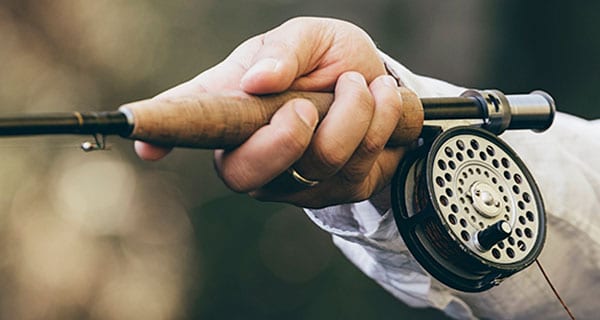Previously, we spoke of the line hand and all that it can do for us; where it should be and when, as well as how it helps us cast. It is a compliment to the rod hand when casting and will help accelerate the line when we haul. The line hand keeps the fly moving when working a fly on the retrieve. The line hand will help set the hook and gather line on the reel when it’s time, too. So if that hand is doing all of that, what is left for the rod hand?
For starters, it holds the rod, and that can be done several different ways. The traditional thumb on top is one way to hold the cork, but that can have its disadvantages. There is the V-grip, which lends itself to more wrist rotation that can lead to increased rod tip speed through rotation. There is the finger on top that is often used for accuracy, but not much for distance casting. The good casters will use several different grips depending on the situation.
Where we place our hand on the rod is important, too. Don’t get fooled by in thinking the thumb has to be on top where the cork and the rod meet. That position will reduce the amount of lever action by shortening the lever. Grip the cork as far back against the reel as you comfortably can. I have my little finger touching it or slightly over the butt end of the cork on the grip. Get used to doing that, and it will never be something you have to think about again.
Apply a good grip on the rod with the style that fits your situation. The rod hand will need to travel in the correct direction and accelerate at the right time. As a reminder, there is a 180-degree consideration when making a normal cast. We want the rod to travel in a straight line 180 degrees away from the target on the back cast, and then 180 back to the target. It is the most efficient motion. There are casts that we make adjustments on the back cast. For example, an oval cast, but that cast will end up being 180 degrees behind us at the end of the rod travel on the back cast.
One of the hardest things the rod hand has to do is apply the proper amount of power at the proper time. We want a smooth constant rate of acceleration to a stop. That applied power will vary on the distance or if casting into the wind, but we always want to start slow with a lift and then progressively go faster until the end of the stroke. Let the rod do the work. Get the feel of the line bending the rod against your hand. That loading or bending of the rod is the heart of the cast. Train your rod hand to feel
